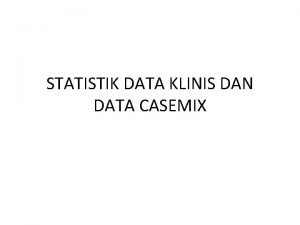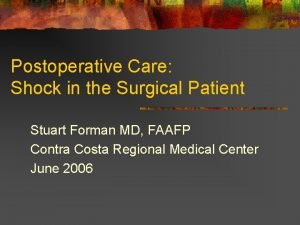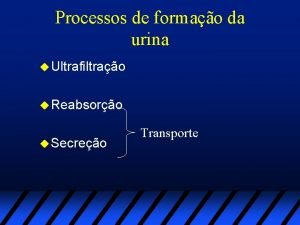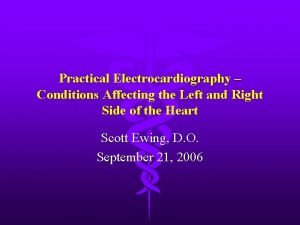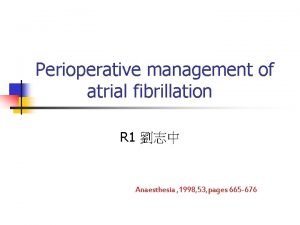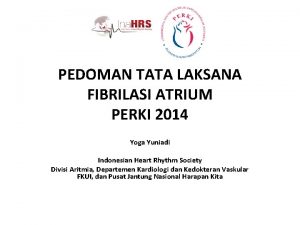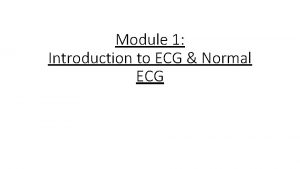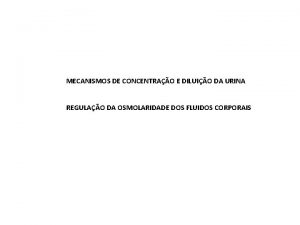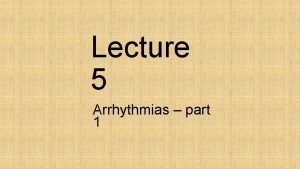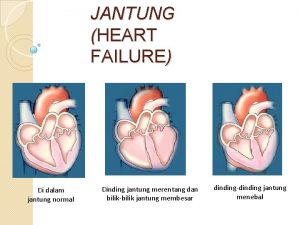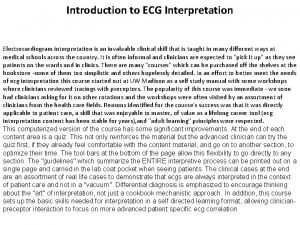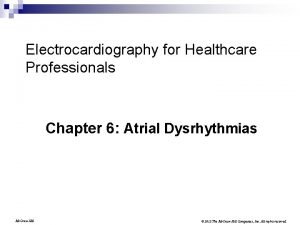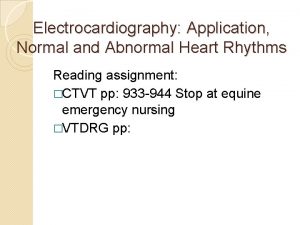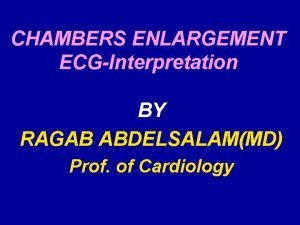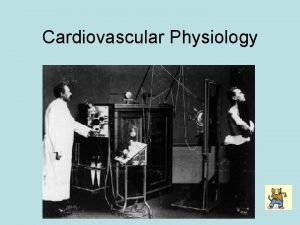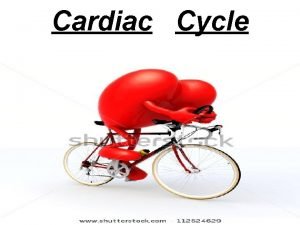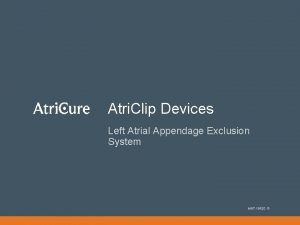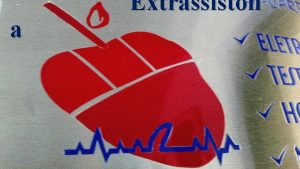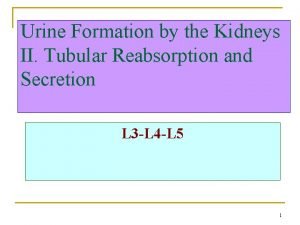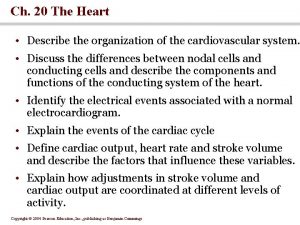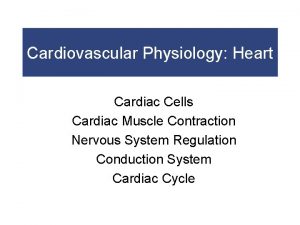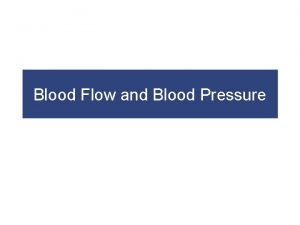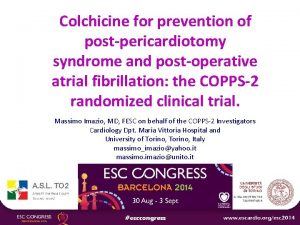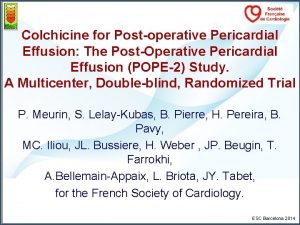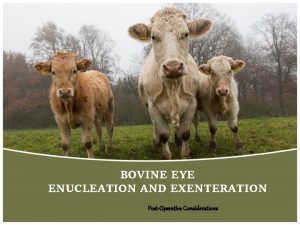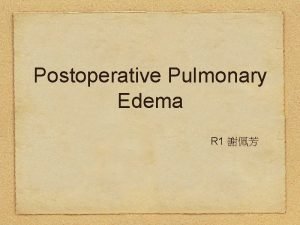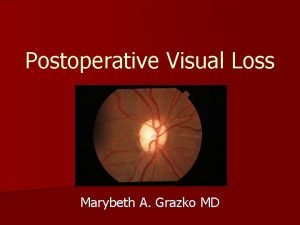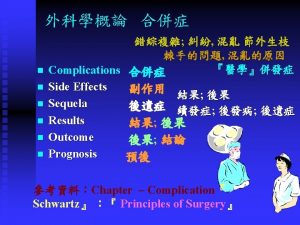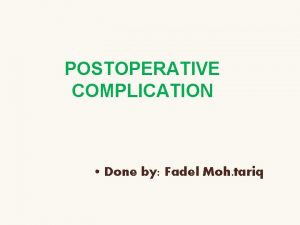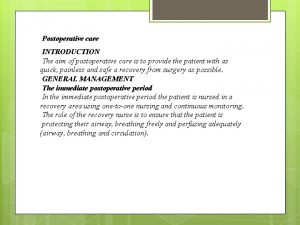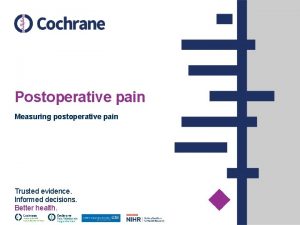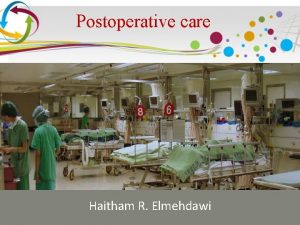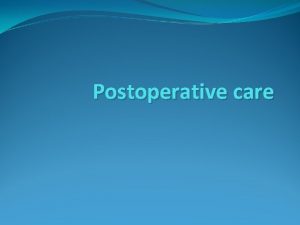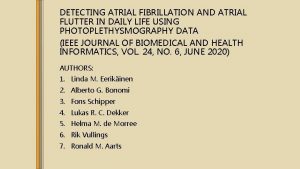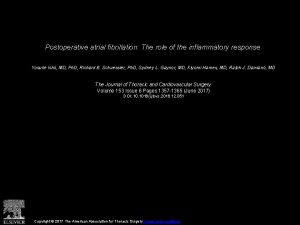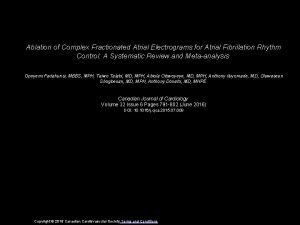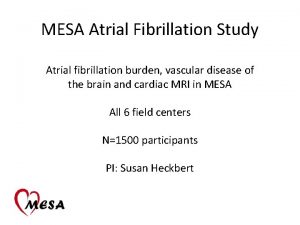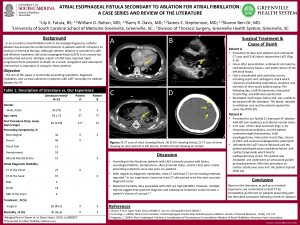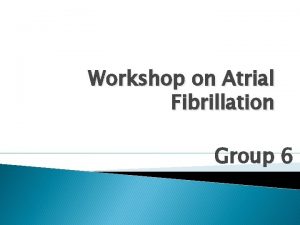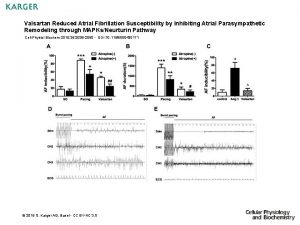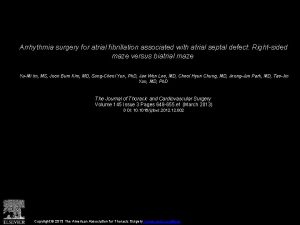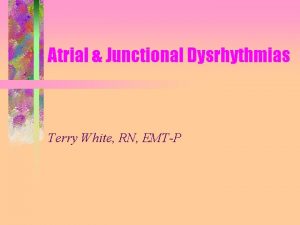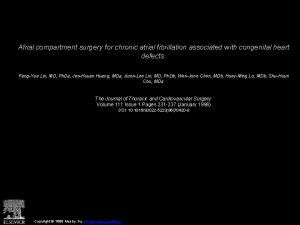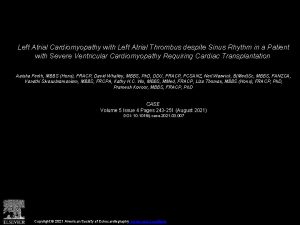COlchicine for PostPericardiotomy Syndrome COPPS and PostOperative Atrial



























- Slides: 27

COlchicine for Post-Pericardiotomy Syndrome (COPPS) and Post-Operative Atrial Fibrillation (POAF) prevention study: a multicenter, double-blind randomized controlled trial. Presenter: Massimo Imazio, MD, FESC on behalf of the COPPS Investigators E-mail: massimo_imazio@yahoo. it Cardiology Dpt. Maria Vittoria Hospital, ASLTO 2, Torino, Italy

Disclosure: None Role of the Funding Source: • Independent study founded and performed within the Italian National Healthcare System. • Approval by the relevant institutional ethical review boards, written informed consent by participants. • The steering committee designed and oversaw the trial. • All data were received, checked, and analyzed independently at the Coordinating Centre (Cardiology Dpt, Maria Vittoria Hospital, Torino, Italy) following blinded adjudication of clinical events and side effects. • Acarpia Lda (Madeira, Portugal) provided supply of drug/placebo as unrestricted grant.

Background 1. Postoperative atrial fibrillation (POAF) is commom after cardiac surgery (10%65%), depending on the surgery type, patient features, definition of arrhythmia, and surveillance*; 2. Inflammation and pericarditis may be contributing factors for POAF; 3. both are potentially affected by antiinflammatory drugs and colchicine, which has been shown to be safe and efficacious for pericarditis prevention° *Ann Intern Med. 2001; 135: 1061– 1073; °CORP trial- Ann Intern Med. 2011; 155: 409 -414

Halonen J et al. JAMA 2007; 297: 1562 -7

Halonen J et al. JAMA 2007; 297: 1562 -7



Herz. 2002; 27: 791 -4 p=NS • Prospective, double-blind design • 163 patients; colchicine 1. 5 mg/day for 1 month • 52/163 (31%) excluded (complications, intolerance, noncompliance) • PPS at 3 months (placebo vs. colchicine: 14/64 vs. 5/47; p= NS)

COPPS study questions Is colchicine efficacious and safe to prevent: 1. The post-pericardiotomy syndrome? 2. Post-operative effusions (pericardial and/or pleural)? 3. Post-operative atrial fibrillation?

COPPS-POAF study Objective Ø To evaluate the efficacy and safety of colchicine for the prevention of post-operative atrial fibrillation; Ø Specific condition to test: occurrence of POAF on intervention (from the 3 rd post-operative day).

Study design and setting Ø Design: Prospective, randomized, doubleblind, placebo-controlled, multicenter trial; • Setting: 6 general hospital in North of Italyurban areas (Maria Vittoria Hospital, Torino; Ospedali Riuniti, Bergamo; Mauriziano Hospital, Torino; Niguarda Hospital, Milano; San Maurizio Regional Hospital, Bolzano; and Ospedale degli Infermi, Rivoli);

Inclusion/Exclusion Criteria For the COPPS POAF substudy, POAF events limited to days 1 and 2 were excluded from the analysis because the effect of colchicine could not be evaluated (the drug was administered starting on day 3). The protocol excluded patients with chronic AF and those with persistent POAF on day 3 before starting colchicine.

COPPS-POAF CONSORT Flow Diagram No patients lost to follow-up All patients analysed for outcomes

Baseline features

COPPS POAF study primary end point

Kaplan-Meier POAF–free survival after postoperative day 3 according to treatment groups.

Clinical Characteristics Comparison Between Patients With and Without Postoperative Atrial Fibrillation (POAF)

Hazard Ratios for POAF on Placebo/Colchicine Treatment in the Cox Proportional Hazards Model

Side Effects and Drug Withdrawal

COPPS study questions Is colchicine efficacious and safe to prevent: 1. The post-pericardiotomy syndrome? 2. Post-operative effusions (pericardial and/or pleural)? 3. Post-operative atrial fibrillation?

COPPS trial: Main results NNT=8 Imazio M et al. Eur Heart J. 2010; 31(22): 2749 -54

Colchicine reduces post-operative effusions °RRR -43. 9% **RRR -52. 3% *RRR -43. 9% *p=0. 019 **p=0. 002 °p=0. 017 Imazio M et al. Am Heart J. 2011; 162: 527 -32. e 1

Colchicine reduces post-operative atrial fibrillation RRR 45. 5% * Imazio M et al. Circulation 2011; in press

Limitations § Colchicine is not registered for the prevention of pericarditis in North America or Europe and its use as such is off-label; § Our limited sample size might have precluded the identification of certain adverse effects; § Colchicine was given starting on the postoperative day 3. On this basis, the potential beneficial effect of the drug is limited from postoperative day 3, with the potential to miss early POAF cases in the first 2 days; § Only Caucasian adults (may not apply to paediatric populations and other ethnicities); § Patients with transaminases elevation, or severe liver disease, elevated creatinine, and patients with myopathy, blood dyscrasias or gastrointestinal disease were excluded; § Women who are pregnant, lactating, or women of childbearing potential without sufficient contraceptive protection were excluded.

Conclusions Following cardiac surgery, colchicine, as empiric anti-inflammatory therapy, appears to be an in-expensive and safe means • to reduce the incidence of POAF and hospitalization length; • to reduce the incidence of the PPS and postoperative effusions.

COPPS Steering Commitee, Recruiting centres and investigators Steering Committee: Chairman: Rita Trinchero, MD, Torino, Italy. Co-chairman and Principal Investigator: Massimo Imazio, MD. Torino. Italy. Nucleus Members of the Study Group on “Heart and Infectious diseases” of the Associazione Nazionale Medici Cardiologi Ospedalieri (ANMCO). COPPS recruiting centres and investigators: Cardiology Dpt, Maria Vittoria Hospital, Torino, Italy (Coordinating Centre; investigators: M. Imazio, A. Chinaglia, B. Demichelis, D. Forno, S. Ierna), Ospedali Riuniti, Bergamo, Italy (investigators: A. Brucato, S. Maestroni, C. Simon, D. Cumetti, P. Ferrazzi), Cardiac Surgery, Ospedale Mauriziano, Torino, Italy (investigators: M. E. Rovere, E. Zingarelli, F. Sansone), Ospedale Niguarda, Milano, Italy (investigators: A. Gandino, A. Barosi, D. Patrini, E. Vitali), Department of Cardiology, San Maurizio Regional Hospital, Bolzano, Italy (R. Cemin), Ospedale degli Infermi, Rivoli, Italy (S. Ferrua, M. R. Conte).

Published online today
 Colchicine dosage
Colchicine dosage Nanda nursing diagnosis for cataract
Nanda nursing diagnosis for cataract Nursing management preoperative care
Nursing management preoperative care Rumus postoperative death rate
Rumus postoperative death rate Postoperative shock
Postoperative shock Peptídeo natriurético atrial
Peptídeo natriurético atrial Right atrial enlargement
Right atrial enlargement Classification of atrial fibrillation
Classification of atrial fibrillation Tatalaksana ventrikel fibrilasi
Tatalaksana ventrikel fibrilasi Are there p waves in afib
Are there p waves in afib Peptídeo natriurético atrial
Peptídeo natriurético atrial Ventricular escape rhythm
Ventricular escape rhythm Fisinopril
Fisinopril Wandering atrial pacemaker ecg
Wandering atrial pacemaker ecg Wandering atrial pacemaker criteria
Wandering atrial pacemaker criteria Ecg tracing
Ecg tracing Right atrial enlargement ecg
Right atrial enlargement ecg Atrial depolarization
Atrial depolarization Cycleblood
Cycleblood Right atrial abnormality ecg
Right atrial abnormality ecg Atriclip mri safety
Atriclip mri safety Batimento de escape atrial
Batimento de escape atrial Amiloride
Amiloride Sinal de sodi pallares
Sinal de sodi pallares Atrial diastole
Atrial diastole Muscle refractory period
Muscle refractory period Pearson education
Pearson education Purkyne tissue
Purkyne tissue



